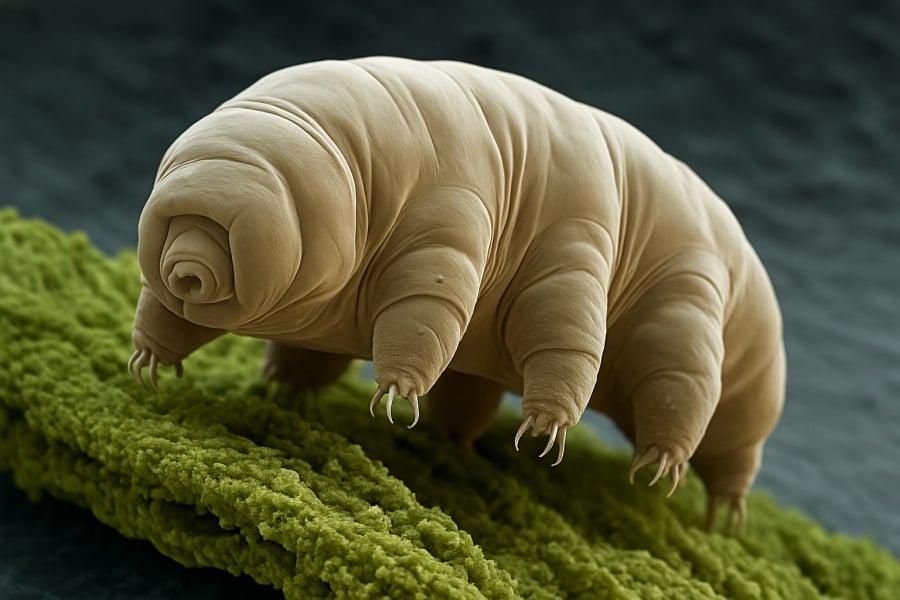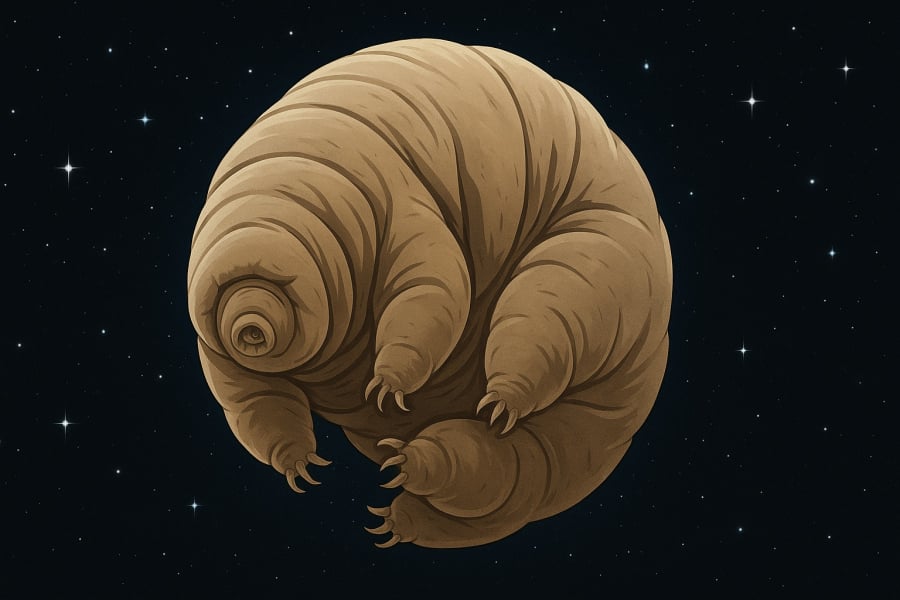The Tiny Space Warriors: Water Bears
Measuring less than 1mm in length, water bears, also known as tardigrades, are among the most peculiar and resilient creatures on Earth. Despite their chubby, slow-moving appearance resembling miniature teddy bears, they are leading contenders for the title of “world’s toughest creature.”
In 2007, the European Space Agency (ESA) sent a group of tardigrades into space. Incredibly, these tiny creatures survived the harsh conditions of space, devoid of oxygen, with extreme temperatures and intense cosmic radiation, for several days. Upon their return to normal conditions, they resumed their activities as if nothing had happened.
In another experiment in 2021, Israeli scientists included tardigrades in a lunar mission. Although the lander crashed, it was expected that the tardigrades might have survived due to their ability to enter a state of “cryptobiosis,” or suspended animation.

Defying the Need for Water and Oxygen: The Secret Lies in Cryptobiosis
What sets tardigrades apart is their ability to almost completely dehydrate their bodies, surviving in conditions where most life would perish. When faced with extreme heat, cold, lack of oxygen, or radiation, tardigrades curl up, expel water from their cells, and enter a state known as “tun,” where their metabolism slows down to a near halt.
According to Dr. Hoang Quang Huy, a lecturer in biology at Hanoi University of Science, “In this state, their metabolic activities are almost zero. They can remain in this state for many years, even decades, and then resume normal activities when conditions improve.”
This remarkable ability allows them to survive radiation, high pressure, toxic chemicals, and even gamma rays, which would be fatal to most other organisms.
Surviving Moisture, Freezing, Desiccation, and the Rigors of Space
Tardigrades are not just resilient in space; in laboratories, they have withstood temperatures of 150°C, only to be subsequently cooled to nearly absolute zero at -272°C. Even after being completely dried out for a decade, they spring back to life as if nothing happened.
As quoted in VnExpress, Dr. Le Quoc Hung, an environmental microbiologist, states, “Tardigrades are unique because they challenge almost all conventional biological definitions. Despite their minuscule size, they may hold the key to understanding the possibility of extraterrestrial life.”
Their astonishing resilience has caught the attention of NASA scientists, as it opens up possibilities for finding or recreating life on other planets.

Tardigrades and the Quest for Extraterrestrial Life
These tiny creatures have altered the scientific perspective on the limits of life. Knowing that a microscopic organism can enter a decade-long state of suspended animation, enduring radiation, UV rays, and the vacuum of space, raises the question: Are there other forms of life out there, beyond our imagination?
In an interview with Vietnamnet, astrophysicist Dr. Nguyen Trong Hien of NASA remarked, “Tardigrades are not just interesting creatures. They are living proof of extreme adaptability and an inspiration in the search for extraterrestrial life.”
This is why scientists are exploring ways to apply their cryptobiosis ability in medicine, biological preservation, and even long-duration space travel.
Final Thoughts: A Lesson in Resilience from a Tiny Teacher
Despite their minuscule size, water bears teach us about latent strength, adaptability, and survival against all odds. In today’s dynamic world, perhaps the lesson from these tiny creatures is that it’s not the biggest but the most resilient that endures.






































